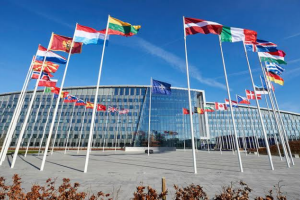India’s recent decision to remove the minimum export price (MEP) for basmati rice marks a significant shift in the country’s agricultural and export strategy. The move is expected to not only boost the country’s share in the global premium rice market but also provide muchneeded relief to farmers who have been grappling with rising production costs and debt. As the new basmati crop season approaches, this timely policy adjustment could be a game-changer for both exporters and farmers.
Historically, India has set a floor price for basmati rice exports to ensure premium pricing in international markets. However, the previous floor prices ~ starting from $1,200 per metric ton, later reduced to $950 ~ placed Indian exporters at a disadvantage in a highly competitive global market. With Pakistan as the only other major producer of basmati rice, the price floor restricted India’s ability to compete effectively on price, particularly in key markets such as Iran, Saudi Arabia, the United States, and Europe. The removal of the MEP addresses this issue directly, allowing India to export basmati rice at more competitive rates, which is expected to drive higher export volumes.
Advertisement
This decision comes at a crucial time, as farmers prepare to harvest the new crop. Without the burden of surplus stocks from the previous season, farmers can expect smoother sales and better prices for their produce. The timing is particularly important because farmers have been dealing with increased input costs, especially for fuel and fertilisers, which have eaten into their profits. India’s decision also reflects a larger strategy to regain its share in the international basmati market. The country has long held a dominant position in the premium rice sector, thanks to the unique qualities of its basmati varieties.
However, price constraints have limited its ability to fully capitalise on global demand. By eliminating the MEP, India can now cater to a broader range of buyers, particularly those seeking more affordable basmati varieties priced around $700 per metric ton. This not only helps clear existing stocks but also ensures a better flow of income for farmers, many of whom are financially vulnerable. Beyond economic factors, the decision also carries political significance. The government has faced increasing pressure from rural constituencies, particularly in light of recent export restrictions on other agricultural products like onions. Farmers, who form a significant voting bloc, have expressed discontent over policies that they feel prioritise international trade at the expense of their livelihoods.
By removing the MEP on basmati rice, the government sends a clear signal that it is responsive to farmers’ concerns, especially ahead of upcoming state elections. In essence, India’s decision to lift the floor price for basmati exports is a win-win situation. It strengthens the country’s position in the global market while offering critical support to farmers at home. As the new crop season approaches, this policy adjustment could pave the way for increased exports, higher incomes, and a more sustainable agricultural sector in the long run.











